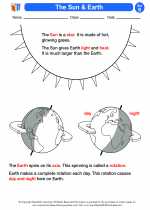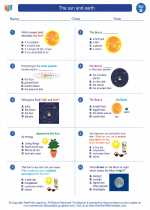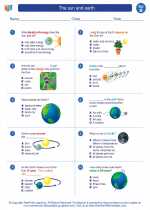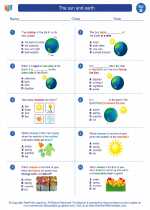Current Electricity
Current electricity refers to the flow of electric charge through a conductor. It is the movement of electrons through a closed circuit, which allows for the transfer of energy and the operation of electrical devices.
Key Concepts
- Electric Circuit: A closed loop through which electric current can flow.
- Conductors and Insulators: Materials that allow or restrict the flow of electrical current, respectively.
- Voltage: The force that pushes electric charges through a circuit.
- Resistance: The opposition to the flow of electric current in a material.
- Ohm's Law: Describes the relationship between voltage, current, and resistance in a circuit (V = I * R).
Study Guide
To understand current electricity, it's important to familiarize yourself with the following concepts:
Electric Circuit
An electric circuit consists of a power source (such as a battery), conductive wires, and a load (such as a light bulb). The circuit must be complete for current to flow, meaning there must be a continuous path for the electrons to move through.
Conductors and Insulators
Conductors, such as metals, allow electric current to flow easily due to the free movement of electrons. Insulators, such as rubber or plastic, prevent the flow of electric current by holding their electrons tightly.
Voltage
Voltage is the potential difference that drives the flow of electric charges. It is measured in volts (V) and determines the force with which the electrons move through the circuit.
Resistance
Resistance is the measure of how much a material opposes the flow of electric current. It is measured in ohms (Ω) and can be affected by the material, length, and cross-sectional area of the conductor.
Ohm's Law
Ohm's Law states that the current (I) in a circuit is directly proportional to the voltage (V) and inversely proportional to the resistance (R). This relationship is expressed by the equation V = I * R.
By understanding these key concepts, you can gain a solid foundation in the principles of current electricity. Consider conducting experiments and building simple circuits to further reinforce your understanding of these concepts.
.◂Science Worksheets and Study Guides Second Grade. The sun and earth

 Activity Lesson
Activity Lesson
 Worksheet/Answer key
Worksheet/Answer key
 Worksheet/Answer key
Worksheet/Answer key
 Worksheet/Answer key
Worksheet/Answer key
 Worksheet/Answer key
Worksheet/Answer key
 Vocabulary/Answer key
Vocabulary/Answer key
